
A Simple Guide To Your
Small Business
MARKETING PLAN
YOUR PLACE IN THE
MARKETPLACE

Illinois Small Business Development Centers
"Experts, networks, and tools to transform your business"
Illinois Small Business Development Centers
(SBDC) provide information, confidential
business guidance, training and other
resources to early stage and existing small
businesses.
Illinois International Trade Centers (ITC)
provide information, counseling and
training to existing, new to-export
companies inte
rest
ed in pursuing
international trade opportunities.
Illinois Procurement Technical
Assistance Centers (PTAC) provide one-
on-one counseling, technical
information, marketing assistance and
training to existing businesses
that are interested in selling their
products and/or services to
local, state, or federal
government agencies.
Technology, Innovation and
Entrepreneurship Specialty
(TIES) ten SBDC location
s
help
Illinois businesses,
entrepreneurs and citizens to
succeed in a changing economy by:
developing the skills of their workers;
promoting safe and healthy workplaces;
assisting in the commercialization of new
technologies; and providing access to
modernizing technologies and practices.
Jo Daviess
Stephenson
Winnebago
Boone Mc Henry Lake
Carroll
Ogle
De Kalb
Kane
Cook
Du Page
Whiteside
Lee
Kendall
Rock Island
Henry
Bureau
Putnam
La Salle
Grundy
Will
Kankakee
Livingston
Mercer
Henderson
Warren
Knox
Stark
Marshall
Hancock
Mc Donough
Fulton
Peoria
Woodford
Tazewell
McLean
Ford
Iroquois
Adams
Schuyler
Brown
Cass
Menard
Logan
De Witt
Piatt
Champaign
Vermilion
Edgar
Douglas
Moultrie
Macon
Christian
Sangamon
Morgan
Scott
Pike
Calhoun
Greene
Macoupin
Jersey
Montgomery
Shelby
Coles
Clark
Cumberland
Madison
Bond
Fayette
Engham
Jasper
Crawford
St. Clair
Clinton
Marion
Clay
Richland
Lawrence
Monroe
Ra
ndolph
Perry
Washington
Jeerson
Wayne
Edwards
Wabash
Jackson
Franklin
Hamilton White
Williamson
Saline Gallatin
Union
Johnson
Pope
Hardin
Alexander
Pulaski
Massac
Mason
www.ilsbdc.biz
Business Center Locations
SBDC
SBDC/ITC
SBDC/ITC/PTAC
SBDC/PTAC
PTAC
Technology Services
*
See Northeast Region map on other side
for Business Center Services in that area.
*
See
Note
Below
800-252-2923
This resource is made possible through a partnership with the Illinois Department of Commerce and Economic
Opportunity, Small Business Development Center and the U.S. Small Business Administration.
*See the Northeast Region map on the last page
for the Business Center Services in that area.
See
Note
Below
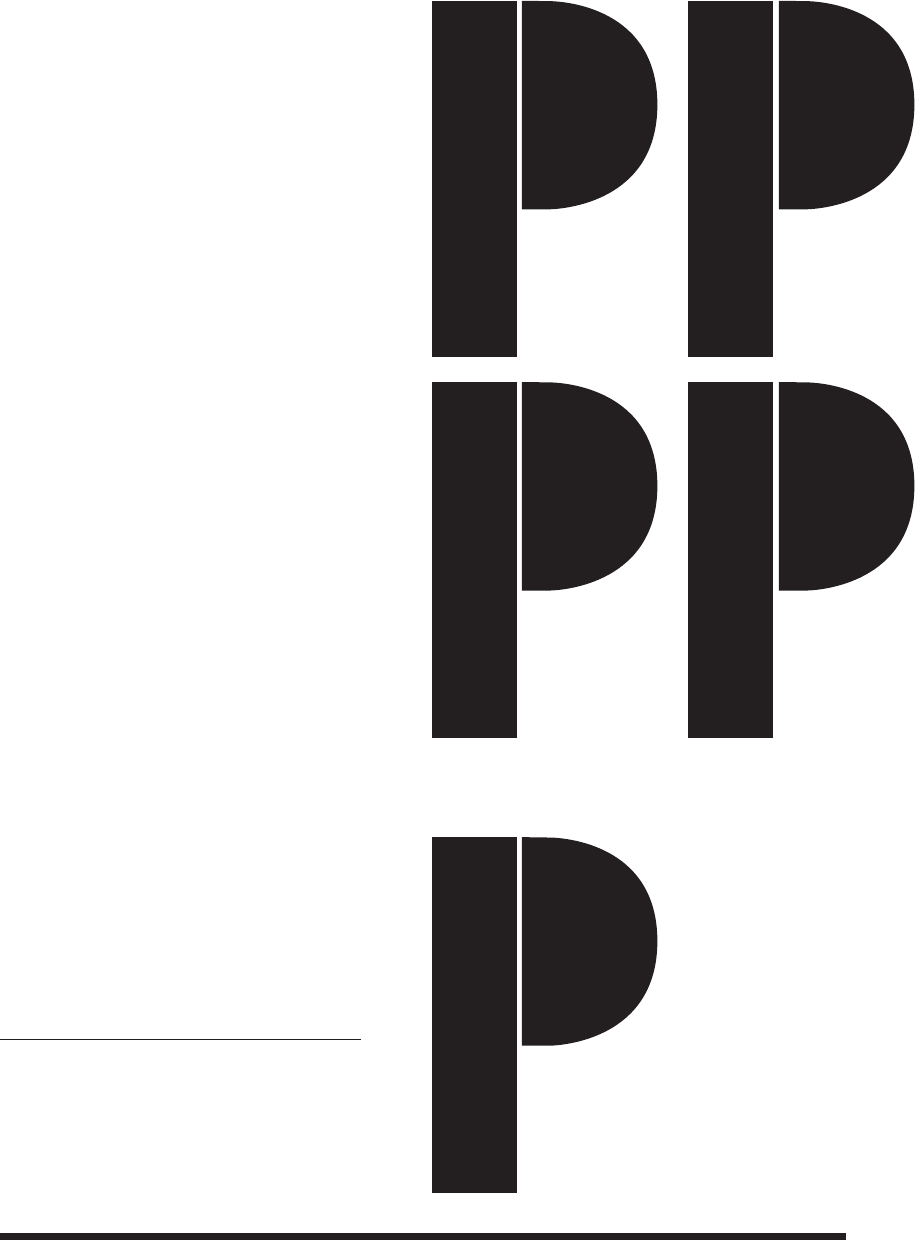
Got a good product?
A great service?
Unfortunately,
that’s not enough
.
3
A S I M P L E G U I D E T O Y O U R S M A L L B U S I N E S S M A R K E T I N G P L A N
Product
This guide adds a fifth
and crucial “P” to the mix.
Today, smart, targeted, relentless
marketing is often the difference
between a business that has reached
a plateau and one that has reached its
potential. Savvy entrepreneurs who
respect the power of marketing set
aside money for it in their annual
budgets. They think of marketing not
as an expense, but an investment.
In simple, easy-to-understand language,
this book aims to take the mystery out
of writing a marketing plan.
Between the covers is a basic
framework for “selling yourself” as a
company. Whether you’re a retailer or
a manufacturer, whether you sell a
product or service, whether you operate
from a storefront or on the Internet —
thinking like a marketer is the first step.
Remember that your business is not a
photo, but a video. Industry trends,
consumer sentiment and the economy
— these are all in constant motion and
so you must be, too. Your “5Ps” must
change, grow, adjust and evolve.
This book explains the classic “4Ps,”
which make up the four corners of
a marketing foundation:
I
s there
a demand?
How will you
differentiate
yourself from
the crowd?
Price
How much
is too much?
Are sales
high, but
profits
low?
Promotion
How will
you create
awareness?
Can effective
marketing be
exciting, too?
Place
How will
you connect
your product
or service
with your
customers?
Plan
Without
one, your
efforts will
be scattered
and your
results not
measurable.
P A G E
6
P A G E
8
P A G E
10
P A G E
4
P A G E
15
This material is not intended to provide or take the place of legal or professional
financial advice. If you need advice, look for a professional financial manager,
consultant, accountant and/or attorney.
Design and Text: © NewGround Publications. (Telephone: 800 207-3550).
All rights reserved. Photocopying any part of this book is against the law.
This book may not be reproduced in any form, including xerography, or by any
electronic or mechanical means, including information storage and retrieval
systems, without prior permission in writing from the publisher. 0212

A Goal Isn’t a Goal Unless
You Write It Down
Make marketing real. Start by physically setting
yourself up. Organize a file system, with clearly
marked folders. Add marketing folders to your
computer’s hard drive.
As you begin to think about your goals and plan
of attack, always write them down. Keep paper
and pen nearby so your thoughts won’t get lost
in the shuffle. And be specific!
Now, respect your plan and chip away at it. And
when you’re feeling overwhelmed, it helps to focus
your energy. Circle one thing on your list to work
on, cross it off the list — and your sense of accom-
plishment will fuel you to tackle the others.
Without a Target
There’s No Bullseye
No doubt, you’ve heard the phrase “target market.”
So what is it? The best way to illustrate the point
would be to squeeze out an example.
Take toothpaste. In the old days, it was pretty
much a one-tube-fits-all product. There were a few
brands to choose from, with very little difference.
Have you walked down the toothpaste aisle lately?
There’s kids toothpaste, whitening toothpaste, sensi-
tive teeth toothpaste, baking soda toothpaste,
striped toothpaste, fluoride toothpaste…the
selection is telling, indeed.
Segmented markets produce the greatest sales
potential. Put another way, don’t try to be all things
to all customers. Refine your efforts. Focus on the
most targeted segments of the market, the ones
you can serve best.
Know Your Audience
How do you find segmented markets? You must
think constantly about who your customers are.
In what ways will they use your product or service?
How often will they buy?
If you’re targeting consumers, think about their
age, income, gender, education, marital status,
profession, lifestyle, hobbies and household size
in relation to your product or service.
If you’re targeting businesses, what size are they?
Think about segments in terms of annual sales,
number of employees, number of locations, etc.
Gather market research at every opportunity.
There’s a wealth of data on web sites, at the library,
in magazines, newspapers, reference books and
trade journals. The government is a good resource
for information and statistics.
Lastly, ask! Talking to your existing clients not only
makes for good customer relations, but it can also
bring great insight into the best way to target new
ones. Find out what your customers like, what they
want and what they need — then give it to them.
Treasure Your
Existing Customers
All too often, small business owners make the
mistake of thinking that marketing is only to attract
new customers. What about the ones you already
have? They’re a captive audience, already “sold” on
your company, so don’t forget to let them know
how much you value their business.
Keep a detailed list of your customers and study
it. Break the list down however you like: by sales
volume, buying frequency, etc. Review patterns.
If a customer tends to buy heavily in the spring,
contact them in March.
4
arketing your small business may seem like a daunting task, but like all tasks, the first
step is to formulate a plan. Remember that lenders look closely at your marketing plan
in relation to your financial statements.
You need to designate a specific amount of money in the yearly budget for marketing. Keep
in mind that new businesses often require more marketing dollars to establish themselves
than companies who have already made a name for themselves.
Y O U R P L A C E I N T H E M A R K E T P L A C E
M
Plan
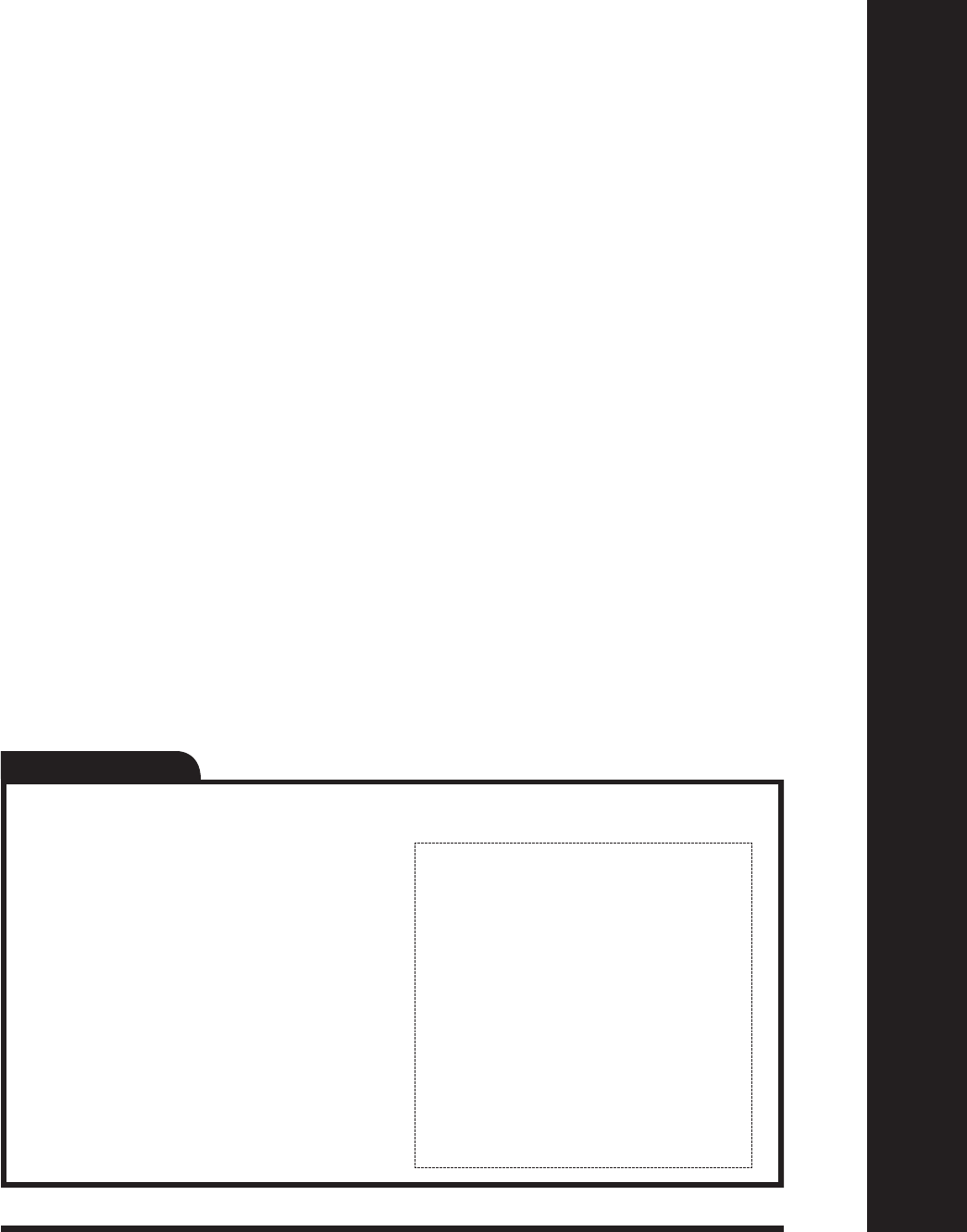
Convince Customers
They Need You
Before They Need You
Marketing can be “passive” or “aggressive.” The
result of passive advertising is that you wait until
a customer needs you. Aggressive companies don’t
wait; they create opportunities. They know that
marketing consistency wins customers long before
they need you.
For example, Pipe Dreams is a small plumbing
and heating company. Their ad used to appear in
the local phone book and customers would call
when their hot water heaters burst. That was
passive advertising.
Now Pipe Dreams places frequent ads in the
community, sends out fridge magnets and buys
radio time. The strategy is, the next time a potential
customer’s water heater breaks, Pipe Dreams will
be the first plumber that comes to mind.
Advertising Is Marketing,
But Marketing Isn’t
Just Advertising.
The ways to market your business go way beyond
placing an ad in your local paper. The overall mar-
keting might include sponsoring a cultural event,
participating in a trade show or appearing on a
local radio show as a guest. Your efforts should be
diverse and flexible.
Tune In to Frequency
The owner of a small business runs an ad every
quarter and comes to the conclusion that “Ads just
don’t work!” Remember, once isn’t enough. The
goal is to become a constant presence rather than a
flash in the pan. For example, rather than running
one big ad in your industry’s trade journal every
quarter, place smaller ads once a month for a year.
Use Downtime to Move Up
If your sales slow down, don’t slow down your
marketing efforts. Not being consistent is a classic
mistake. Use slow time to restore and create
demand with aggressive efforts. Remember that
the only thing you’ll get from less marketing is
less business.
Be smart about when you place ads. For example,
a local magazine rep calls offering a small interior
design company ad space in an upcoming design
issue. But how many similar companies will be
advertising as well? Wouldn’t it be a better idea to
hold off, to capture more “quiet time” with
prospective clients?
Step Outside The Box
Thinking creatively about where to market should
be at the foundation of your efforts. Suppose you
own a small finance company. Don’t automatically
place ads in financial journals. Instead, how about
your ads appearing in home construction magazines?
Always think of places to reach an audience where
you’ll have the greatest impact.
5
A S I M P L E G U I D E T O Y O U R S M A L L B U S I N E S S M A R K E T I N G P L A N
Plan
Because marketing needs and costs vary widely, there
are no simple rules for determining your budget. A
popular method among small business owners is to
allocate a percentage of gross sales for marketing.
But if you’re launching a new business or product,
the challenge will likely demand a larger financial
commitment.
Another method used by small business owners is to
analyze and estimate the competition’s budget, then
to use it as a guide when determining your own.
Once your Marketing Plan is complete, estimate the
costs of each marketing activity you have described,
and arrive at a grand total. Having a “hard number”
will help keep everyone on track over the course of
the coming year.
Your Marketing Budget: How Big Should It Be?
F. Y. I .
Maxtronics, a retailer of electronic games with
three locations, might have a Marketing Budget
that looks like this:
Direct mail printing . . . . . . . . . . . $5,000
Direct mail mailing cost . . . . . . . . $2,000
Web site development . . . . . . . . . $5,000
Development of ads . . . . . . . . . . $2,000
Ad space in local magazine . . . . . $3,000
Sponsorship of “Today’s Gear”
radio show . . . . . . . . . . . . . . . . . $2,000
Booth at Teen Expo . . . . . . . . . . . $3,000
Production costs –
T-shirts/temporary tattoos . . . . . . . $1,000
Total marketing budget . . . . . . . . . $23,000

Staying Flexible
Is Part of Growing
In order to stay vital, most businesses have to
practice fluid thinking. Revising, adjusting and
improving products and services to meet customer
needs will keep you vital. If a particular product
isn’t selling, why offer it? If another product is
selling well, expand on it.
Take the example of The Mouse Trap, a small
business that custom builds computers and sells
them in a retail space. When it seemed that 8 out
of 10 customers inquired about tutoring, a light
went off in the owner’s head. A few weeks later,
he was offering evening classes, and even making
house calls to his customers, who were willing to
pay handsomely for help with their new machines.
He expanded his services to meet the demand
of his customers.
Service Is
Everybody’s Product
All the marketing in the world can do but one job:
bring customers to you. What you do with them
then is your choice. It matters very little whether
you landscape gardens or sell shoes — customer
service should be every business owner’s priority.
Your corporate culture or the standard of behavior
you set for your company is key. Are salespeople
friendly and helpful? Is the phone answered
politely? Do you follow a sale with a thank-you
letter, a phone call or an e-mail? The way your
business “behaves” is marketing in action.
Asking friends to act as undercover customers can
give you unbiased feedback about how client-friendly
your business truly is. Whether ordering a thousand
widgets from your manufacturing facility or drop-
ping off some dry cleaning, their feedback on the
experience can be invaluable.
Discovering Your
Features & Benefits
All products and services have features and benefits.
Features are your products’ characteristics that trans-
late into benefits. For example, an air mattress with
an attached pump is a feature. The benefit? The
pump takes the work out of making a guest bed.
Features are easy to point out, but describing
benefits may take more thought. Benefits that pro-
vide emotional or financial rewards are especially
attractive to people. Financial rewards allow the
buyer to save money, make money, or gain time
(since time is money). Emotional rewards allow
the buyer to feel better.
> An emotional payoff: the benefit of low-fat
cookies is not reduced caloric intake; it’s what
a thinner body might bring.
> A financial payoff: the benefit of professional
asset management is not retiring with more
money, but being able to enjoy your golden years.
Reap The Benefits of
Asking Your Customers
How do you clearly identify your benefits? Con-
sider your target markets’ viewpoints. Develop
surveys. Talk to customers and ask them for
suggestions or ideas for improving your products
and services.
Look at who has purchased your product in the
past. Develop profiles (a list of information)
about these customers. What do the profiles tell
you about your benefits? On the reverse side,
understand the value of customer complaints.
What benefits are missing? You could even train
employees to question customers about what they
like and don't like.
Once you know your benefits, use them relentlessly
in your marketing material and in all selling situations.
6
hy should someone use your product or service? What do you have that your
competitors don’t? Your Unique Selling Proposition (USP) should be the
cornerstone of your thinking when designing and marketing products. Your product or
service must have the potential to sell. Make your product or service stand apart from
t
he crowd in any way you can. Make sure there’s a demand for it.
Y O U R P L A C E I N T H E M A R K E T P L A C E
W
Product

Competition: Know
What You’re Up Against
Business is highly competitive. If you’re not aware
of your competition, how will you offer customers
s
omething different or better? Don’t just compare
obvious things like product and price. Compare
your quality, promotion, perceived value, flexibility,
p
restige, knowledge, innovation, reliability, and
schedules. It will become obvious where your
business needs to improve.
Find out the answers to these questions:
쩧
Who are your closest competitors?
쩧
Are these businesses growing or shrinking?
쩧
How do they run their operations?
쩧
What are their strengths and weaknesses?
쩧
How do their products and services
differ from yours?
쩧
In what ways are they the same?
쩧
What are their sales strategies?
쩧
Who are their target markets?
쩧
How do their prices compare to yours?
Information Is a
Powerful Tool
Create a file for each of your competitors. Include
their advertisements, promotional materials, prices,
and any other research you gain. Review their mar-
keting materials throughout the year for content and
frequency. Know what promotions they run, when
they offer sales and what events they sponsor.
Where can you gather data on your competition?
These days, it flows freely. Log on to their web
sites, search the Internet, flip through written sources
(local newspapers, industry/trade publications) and
attend trade shows where they exhibit.
There’s no rule against doing a little investigating to
explore the field you’ll be playing on. Pick up the
phone, log on to your competitor’s web sites or visit
in person. If you’re uncomfortable doing this your-
self, or you think a competitor would be resistant to
your visit, send a “secret shopper” instead.
Differentiation
A thorough understanding of your benefits com-
pared to your competitors’ allows you to compete
t
hrough differentiation. Now you can explain how
your product is different or better — your Unique
Selling Proposition.
What happens if your product or service really isn’t
a
ll that different? Keep in mind that a company
differentiates itself when prospects and customers
perceive it to be different. How can you create
t
his defining factor?
• Be New Be the first to offer a new product
or service. There can only be one “first,” so
claim the leader position if you can.
• Be Improved Improving your product or service
shows you care about customer satisfaction.
Remember, when you modify your product’s
features, benefits will change.
• Be Creative For example, by putting products or
services into groupings, you can create perceived
value. A hair salon charges one price for a cut,
another fee for a color. When they decided to
add in a blow dry and call it the “Total Trio,”
sales went up.
7
A S I M P L E G U I D E T O Y O U R S M A L L B U S I N E S S M A R K E T I N G P L A N
Product
Little Things Count
Any opportunity you can seize — or create — to
further your marketing cause deserves consideration.
Be a relentless promoter of your business. Get
creative. Have fun! Remember that little things
can equal big impressions.
• Suppose you own a restaurant. The wait staff
includes a response card with every check,
asking about the food and service, and for
a mailing address. The card also asks for a
birthday (month and day only). A month be-
fore the big event, you send a mailing offer-
ing them a complimentary birthday cake if
they celebrate at your restaurant. The mailing
costs a few dollars, the cake may cost you
$30, but you get $400 in business and 15 new
people who can now tell others about your
wonderful restaurant.
• If you own a windshield repair service, every
car that leaves your premises is vacuumed and
given an air freshener.
• Your delivery service gives the client a choco-
late bar each time you pick up a package.
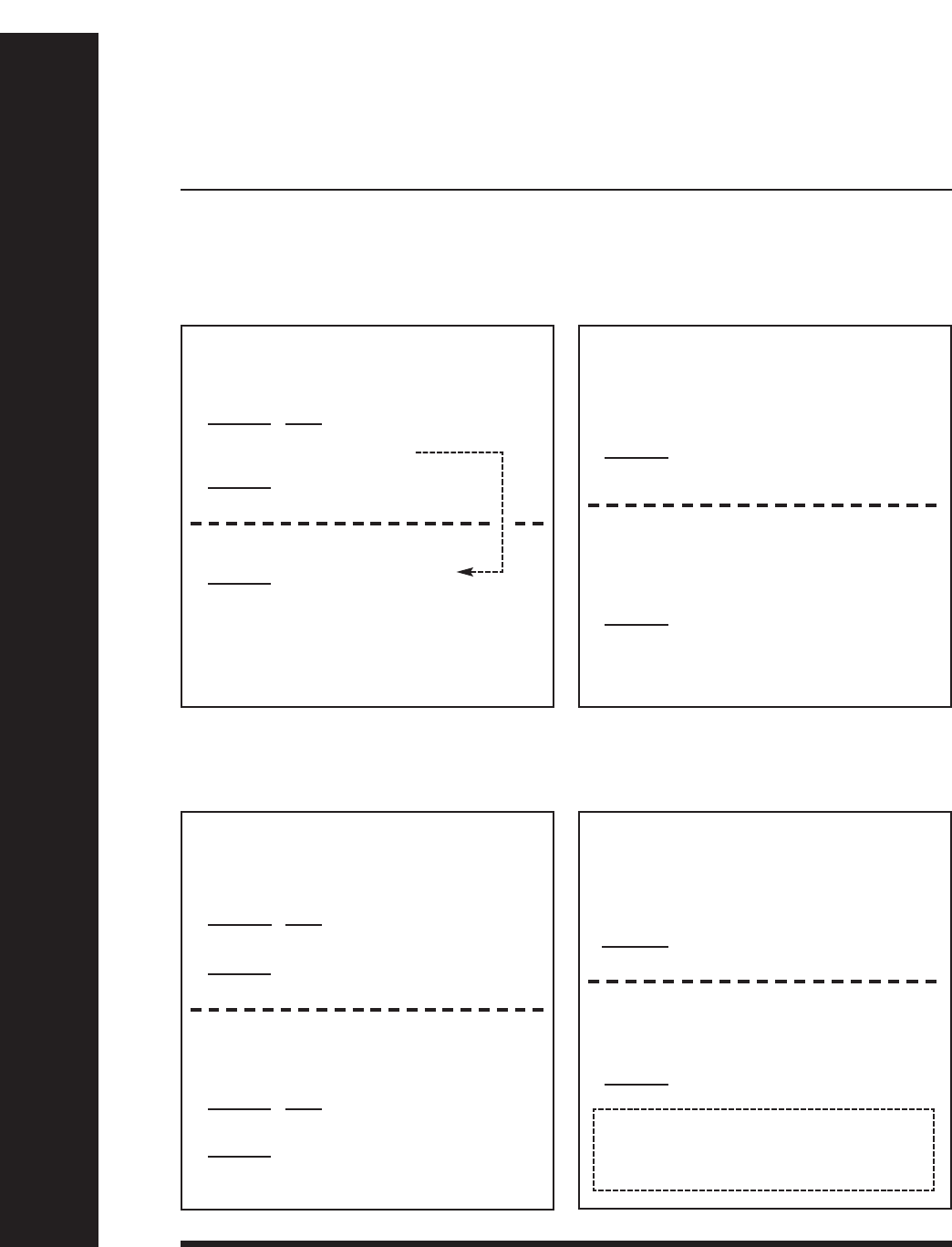
ADJUSTING A PRODUCT’S BREAK-EVEN POINT
Lower variable expenses to 60% and profits rise to $100,000.
$500,000 100% Sales
- $300,000 - 60% less Variable Expenses
$200,000 40% Margin
- $100,000 less Fixed Expenses
$100,000 Profit
Raise prices to increase sales to $800,000
and the profit rises to $140,000.
$800,000 100% Sales
- $560,000 - 70% less Variable Expenses
$240,000 30% Margin
- $100,000 less Fixed Expenses
$140,000 Profit
8
othing is more important than the price you get for your products or services. You must
offer them at prices your market is willing to pay, yet ensure that you make a profit.
Y O U R P L A C E I N T H E M A R K E T P L A C E
N
Price
To determine your break-even
point, you must know your ex-
penses. Expenses can be di-
vided into two categories:
쪧
Fixed expenses do not change whether sales are up or down.
For example, your rent.
쪨
Variable expenses do change. Factors that might affect these expenses
are inventory costs, sales commissions and how good or bad business is.
ADJUSTING A SERVICE’S BREAK-EVEN POINT
Lower the assistant’s rate and profits are $140,000
$200,000 2,000* hours x $100 per hour
- $30,000 less Fixed Expenses
- $30,000 less Variable Expenses (2000* hours x $15 per)
$140,000 Profit
Raise the hourly fee to $125 and profits are $170,000.
$250,000 2,000* hours x $125 per hour
- $30,000 less Fixed Expenses
- $50,000 less Variable Expenses (2000* hours x $25 per)
$170,000 Profit
Reaching the Break-Even Point
A company is at the break-even point when it has neither a profit nor a loss. For example, if it costs you $500
to produce a product and you sell it for $500, you are at the break-even point — with $0 profit or loss.
Pricing for Profit
You’re in business to make money, so sales and expenses
must be adjusted to gain the profit you want. These adjustments might include
increasing your sales, raising prices or fees and lowering expenses.
*
This example is based on 2000 billable hours
annually (250 days a year x 8 hours a day = 2,000
hours). Why not 365 days? Subtract for holidays,
vacations, sick days, and non-billable activities.
FINDING A SERVICE’S BREAK-EVEN POINT
Example: Ezra’s Interiors charges $100 an hour for design
services. Rent and other fixed expenses total $30,000 annually. The
firm has one project assistant who is paid $25 an hour.
$30,000 Fixed Expenses
÷$0.25 Variable Expense (divide $25 paid to the assistant
by the $100 hourly fee). Math Reminder .25=25%
$120,000 Sales needed to cover expenses or break-even
The $100 hourly charge does not create a profit since the break-even
amount is $120,000.
$200,000 Sales ($100/hour x 2000* billable hours)
- $30,000 less Fixed Expenses
- $50,000 less Variable Expenses
($25/hour to assistant x 2000 hours)
$120,000 Profit
The hourly rate must be increased or the assistant’s fee must be lowered.
FINDING A PRODUCT’S BREAK-EVEN POINT
Example: Colina Corkscrew Inc.
$500,000 100%
Total Sales
- $350,000 - 70% less Variable Expenses
(cost to produce $500K in products)
$150,000 30% Margin/Profit
- $100,000 Total Fixed Expenses
$50,000 Profit
$100,000 Total Fixed Expenses
÷ 30% divided by the Margin
$333,333 Sales needed to cover expenses
or break even
To increase profits, lower expenses or increase sales.

9
A S I M P L E G U I D E T O Y O U R S M A L L B U S I N E S S M A R K E T I N G P L A N
Name Your Price
Fair pricing is a delicate balancing act. Charge too
little and your profits are too low — charge too
much, and your sales go down. So how do you
determine a fair price for your product without
pricing yourself out of business?
Think of your cost (what it costs to offer your
product or service) as the floor, and your product’s
perceived value (what you sell it for) as the ceiling.
Somewhere between the two is the right price —
the price that seems fair to your customers and
brings you a profit.
What Will The Market Bear? How much are your
customers willing to pay? For example, a company
produces widgets for $2 each and they’re a top
seller. The price is raised to $2.50 and sales come
to a screeching halt. The good news is, they’ve
learned what their market will bear.
Consider Price and Demand Sometimes it’s more
important to consider a product’s total contribution
to profits rather than what it’s sold for. For example,
the owner of a coffee shop wants to sell a new
popular frozen drink which costs him $1. Based on
his research, he found he shouldn’t sell the drink for
the highest price ($5) or for what will move the most
number of units ($2). The best price ($3) maximizes
the item’s contribution to his profit. The coffee shop
sells the drink for $3, but its “total contribution” is that
it brings people in who buy a muffin as well.
Perceived Value. Determining a price for your
product is based on many factors, but don’t forget to
consider perceived value. Suppose you were asked
if you’d pay $40,000 for a car. Your first response
would be, “What kind of car?” This simple exchange
illustrates the two main ingredients in the pricing pie:
what you will pay vs. what you expect to receive.
Value-based pricing goes beyond a standard
mark-up method, allowing you to think about your
business from the customer’s perspective, their per-
ceived value of your product or service. Understand
the perceived value of your product or service by
studying its consumer benefits, convenience and
quality. Factor in your company’s image, reputation
and packaging. Think about customer demand and
competitive prices.
For example,
Copy To Go comes to its customers to
pick up printing jobs, then delivers when the job is
done. Because this convenience eliminates an hour
or so of down time for customers for every job,
Copy To Go can charge more than the printer down
the street who doesn’t offer these services.
Price
A Few Value-based Pricing Strategies
• Aim High There are instances when you can
charge a high price compared to your costs: if your
product is unique and valuable, if your target
market is affluent or if you’re offering something
prestigious. If you’re selling bike helmets with a
headlight built in — and no one else is — you can
probably charge more. If you have a great location
or you can offer the convenience of free delivery,
you can push your prices a bit higher.
• Custom Design Sometimes creating a product to
suit your audience affects pricing. For example,
you’re a company that designs and manufactures
solid brass doorknockers. A very upscale catalog
company wants to include them in their book. It
might be better if you developed a more expensive
collection just for the catalog’s clientele. On the flip
side, if you were a florist doing business in a work-
ing class neighborhood, it would be smart to offer
more affordable bouquets.
• Stay the Same. Keep your price the same as
your competitors when offering a similar product or
service, when prices are well-established or when
you have nothing that would justify a higher price.
• Go Low. A low-price strategy gains customers
who are price sensitive, allowing you to create
awareness and establish your business. Make sure
you are producing a profit. If your prices cannot
be the cheapest, make customers believe they're
getting something special for the extra expense.
• Give Them a Break. Consider offering cash
discounts to customers who pay promptly, since they
help you maintain a positive cash flow. Offer quantity
discounts on large orders, since the cost-per-unit to
sell or deliver your product will likely go down.
• Mix It Up. Price some products low to attract
customers, but put a higher mark-up on other
items to make up for it.
• Pricing Is Not Forever As your business grows
and changes, be sure to fine-tune your prices.
The factors that determine the price of your product
— cost increases, seasonal demands, product
upgrades — change. While you don’t want to
confuse your customers with constant price adjust-
ments, don’t be afraid to revisit the math regularly
to make sure you’re still turning a profit.
• After The Sales Don’t forget to factor in what it
will cost to service the customer after the sale. Do
you provide customer service, technical advice,
maintenance, returns or exchanges? All these costs
should be included in the pricing mix.

10
Y O U R P L A C E I N T H E M A R K E T P L A C E
The Playing Field
The world we live in is exploding with marketing
messages. Today, we are marketed to when we’re
put on hold, when we rent movies, go online, open
our bills, even when we pump our gas. This week
alone, you’ll be bombarded with thousands of
marketing messages.
Just notice what happens on the TV screen as the
credits are run after your favorite show. You might
see the logo of your local TV station, a sponsor logo
and slogan, a current event headline, the time and
temperature, even the weather forecast, all on screen
at the same time! What a telling example of how
inundated with information audiences are these days.
Less Is More
Trying to jam every little point about your product
into one ad is a great way to make sure none of
them get through. Smart communication is built on
a foundation of discipline. Exercise restraint con-
stantly. Choose your information wisely, for it will
be competing with scores of other messages. (Will
“free parking” really attract more customers?) If
you have a list of ten points you want to make in
a communication, include the top one or two only.
Trust that once you gather customers, you will have
the opportunity to make the rest of your points.
Mix It Up
Don’t put all your marketing eggs in the same bas-
ket. Try a variety of marketing vehicles, and in dif-
ferent combinations. You’ll soon get a feel for which
ones work. For more information about media
choices, see page 12.
Back Into Your Message
Smart communication isn’t what you want to say,
but saying what your audience wants to hear. This
strategy grows from one of the basic principles of
marketing: to know your audience. If your response
cards and customer surveys show that your clients
care about price above all, then make price your
lead point. Make it your business to find out what
your audience wants to hear, and gear your mes-
sages accordingly.
The Glaze Phrase
“Great quality at great prices.” “We value our
customers.” “The best for less.” Consumers have
heard these clichés a million times, so what makes
you think they’ll listen when you say them? Use
marketing language that’s fresh and interesting.
Instead of saying, “We have a large selection,”
how about, “You’d have to go to China to find
more varieties of tea!” Say the same old thing, but
in a brand new way.
Remember that telling isn’t necessarily selling.
Consumers read from one point of view: “What’s
in it for me?” So instead of listing a feature of your
product (“Our travel agency offers electronic
ticketing”), talk about the benefit to your customer
(“Save time, gas and parking hassles — one click
of the mouse and you’re on your way!”).
C O M M U N I C A T I O N B A S I C S
reating effective ads, designing brochures, developing web sites and writing press releases is
challenging. But, armed with a few basics, you can have fun promoting your company.
Promotional materials serve as “reminders” of the benefits of your products and services. Every
p
iece of promotion you do is another step toward building your company. Each one encourages
existing customers to buy more and attracts new customers to replace lost business. Remember,
your promotional efforts probably won’t create an instant customer base or cause sales to
skyrocket. Growing a business takes time, perseverance and consistency.
Hiring graphic designers, copywriters, mailing houses and printers to promote your business gives
you a polished image. Find creative professionals by looking in the yellow pages, searching the
Internet and asking for referrals from other small businesses.
C
Promotion

11
A S I M P L E G U I D E T O Y O U R S M A L L B U S I N E S S M A R K E T I N G P L A N
Y O U R I M A G E
Your Name
Marketing starts with your company’s name. Smart
marketers know that it’s a big task to get consumers
to remember a name, so make sure your name is
simple and memorable. If you repair computers,
which name would be more consumer-friendly:
JB Computer Repair or The Mouse Trap?
Make sure your name isn’t already “taken.” One
determining factor might be, “Is the name available
for a web site?” You can go online and check your-
self. An attorney can check for registered trademarks.
Contact your Secretary of State’s office to see if a
company name is being used in your state.
Your Logo
A company’s logo — the symbol that represents the
business — is the very foundation of your image. A
logo should be easy to recognize
and read, whether it’s large or
small. Color helps to “brand” your
company. Once you settle on logo
colors, use them persistently to
help customers associate you with
them. Put your logo everywhere
— on your products, signs, busi-
ness cards and stationery. Use it
consistently and proudly. If you
invest in making the right first
impression, it’s likely to be a
lasting impression.
Your Tagline
Your company slogan should
be short and memorable. In some cases, it has to
work very hard. Suppose your company name is
unspecific, like Ocean State Restoration. What do
you restore: cars, homes or antique boats? In this
case, a tagline — “New life for old boats” —
is a hard-working completion to the name. Include
your tagline wherever your logo appears.
Your Packaging
Suppose someone handed you a brown paper bag
with a gold watch inside. Now imagine getting that
same watch in a sleek black velvet box, wrapped
with a gorgeous gold ribbon. Pay careful attention
to presentation and packaging. If you deal with the
public, make sure everything they see or leave with
— bags, boxes, menus, gift wrap, etc. — reflects
your image in a positive way.
Your Printed Material
If it’s on paper, it’s a crucial piece to your image
puzzle. Ads, direct mail, brochures and flyers all
represent your image, so make sure they look
professional. But even if you don’t use any of
them, chances are you’re still using printed material
in the form of invoices or letters to your customers.
Remember, everything reflects your image!
Your Physical Space
Even if customers or clients rarely come to you,
there needs to be a professional standard for the
appearance of your business. Keeping it neat, clean
and pleasant affects attitude and productivity. Look
at your space through a visitor’s eyes: is it safe and
comfortable? Does it reflect the image you want? If
not, a fresh coat of paint or a storage unit can do
wonders.
Word of Mouth
In a simpler time, people shared information with
their friends and family. But today, with consumer
review websites like yelp.com and angieslist.com,
customer feedback can reach tens of thousands,
worldwide! So yes, the bar has been raised. Studies
have shown that potential customers take word of
mouth very seriously, so don’t dismiss this powerful
tool. How can it be a tool? Consider referral programs:
“Tell someone about our great service and if they
sign on, we’ll send you a $50 gift card!” A program
like that not only brings in new customers, but
fortifies the loyalty of your existing ones.
Promotion
F. Y. I .
Is Your Marketing List-Less?
Smart marketers understand that good lists are invaluable marketing
tools, and they mine for names as if they were gold. The word “lists” is
plural because, the more specific the list, the more specific you can be
in your marketing. You could potentially have a list of customers who
buy regularly, a list of customers who haven’t bought in a year, or a list
of prospective customers who’ve never done business with you.
You can rent or buy databases for just about any group imaginable. If
your business is open to the public, you could easily develop your own
list from active customers. Why not keep a book for people to sign? Or
a fishbowl for people to drop their business cards in? Another idea
might be to print response cards that ask for feedback — and a name
& address.
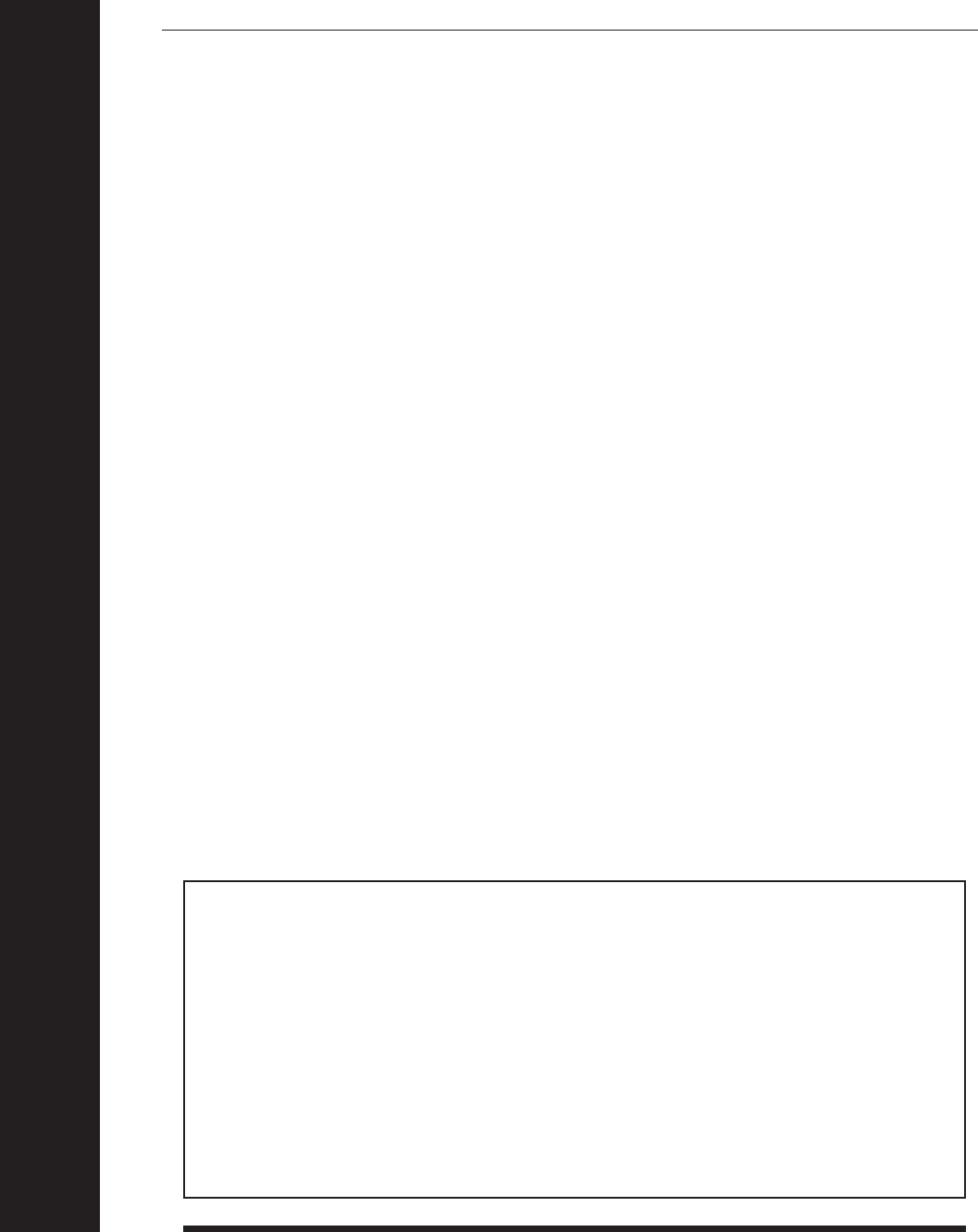
S O C I A L M E D I A
What Is Social Media?
It’s a big topic! But if we had to come up with a
definition, it would be an analogy. Think of some
websites as a one-way street; you go there for infor-
mation and it flows to you. Social media sites are
two-way streets, where visitors contribute, partici-
pate and interact. Rather than be intimidated by this
social media explosion, think of it instead as rich
opportunity – a new technology toolbox to help
you gain, engage and keep customers.
I’ve Got a Website.
Now What?
Think of your website as a living, breathing, chang-
ing, vital portal to your business. It’s not a printed
brochure that you produce once and check off your
list. A website can bring business you never
dreamed possible, but you must be willing to care
for it. Hiring professional web developers is where
you begin (see the section named SEOs), but be sure
to ask about WCM – Web Content Management. This
application allows you to access and manipulate
your site’s content.
Register your website with the big search engines
like Google, to be sure it appears when someone
who’s local searches for your product or service.
Monitor consumer review sites like yelp.com (free)
and angieslist.com (paid memberships) to see what
the “word on the street” is about your company.
You may want to consider banner ads on popular
sites like Google or Facebook. But why not get a
little creative? Suppose your company makes canine
fashions. You might place an ad on the website of
the local kennel that boards dogs.
SEOs
Let’s say a potential customer, who lives just 6
miles away, wants 28 replacement windows for the
Victorian home she is restoring. At the top of her
search results is a company with cookie-cutter
quality located 70 miles away. Why didn’t you
appear at the top of the list?
Getting search engines to recognize your website
for its relevance to searches – and appearing in the
highest possible “results position” – has everything
to do with SEO, or Search Engine Optimization. (If
your website is SEO-rich, it has good spiderability.)
Content can be optimized in many ways, ranging
from highly relevant words and phrases, to the
way codes are handled by the web developer, to
the regularity of blogging posts. Don’t hesitate to
discuss SEOs with your website developer.
Understand the Pace
The nature of the web is immediacy. One of the
worst things a visitor to your website can see is an
“upcoming” event from last year, or a 2-year-old
price list. It’s a good idea to designate someone –
and in many cases, that’s you – to “man the social
media.” Inquiries from your website or posts on
your Facebook page should be acknowledged
ASAP. Suppose a potential customer asks about
placing a large custom order and you’re too busy
that day to respond. It’s smart business to pop back
a reply that says, “Thanks so much for your ques-
tion. You can expect a call tomorrow.” Do, how-
ever, put time limits on maintaining all your social
media. You don’t need to post often (twice a day),
but you should post regularly (every Friday).
12
Y O U R P L A C E I N T H E M A R K E T P L A C E
Promotion
How Do You “Jump In?”
Let’s suppose your business has a website, but no social media presence whatsoever.
Here are some examples of easy-to-do social media entries:
• The chef at a Japanese restaurant has just prepared his masterpiece. This Tweet goes out at 11 AM:
“What’s for lunch today? Our incredible Crispy Shrimp! Chef Tanaka’s specialty is unforgettable and
affordable. Get here before it’s gone!”
• Your shoe boutiques are celebrating the season with a sale, and your Facebook post reads: “Run,
don’t walk, to our Spring-in-Your-Step Saturday! Mention this post for another 10% off. We’ll photo-
graph you in your new shoes and post them here next week. See you on Saturday!”
• If you’ve got news, share it. Here’s a sample of how a blog post might read: “Kathi Ferguson, one of
our most popular personal trainers here at Tone Fitness, has just been named Trainer of the Year by
Shape Up magazine! Kathi has been with us for five years now, and she is one of the most…”

Blogging
This funny sounding word is a combination of
“
web” and “log” and simply put, it’s an online
journal you can use to connect with, hear from
and learn about your customers. Start by
s
earching and subscribing to related blogs, es-
pecially from your competitors. Notice that the
most successful blogs are relatively short and
have something to say. Think about the content
that your audience wants, and write to it. Blog-
ging with regularity will move you higher up in
search results ranking. Your website company
will know how to incorporate a blog onto your
website, or you can start at sites like
www.wordpress.com.
Many companies take blogging to the video
arena and become “vloggers.” Say, for example,
you create a series of 10 videos to commemo-
rate your 10 years in business. Or you want to
highlight the capabilities of your new printing
press. An entertaining, creative, short video –
no more than a few minutes – posted on Face-
book or YouTube can be a great marketing
tool.
Blasting
Sending emails out to a mass audience is called
b
lasting. Just like “paper mailing,” it’s critical to
have a list of active, interested customers. So let
the gathering begin. Give visitors a place to
s
ign up on your website, or at your business
location – and then, romance them with special
offers that are exclusive for them. After all,
these are your “A-list” customers who have
invited you into their inboxes.
Start by signing yourself up to get blasted by
your competitors and by some of the “big guys”
like Walgreen’s, Kohl’s or Home Depot. The
emails are fully designed, full-color communica-
tions. Not to worry. You can look this good,
too. Easy-to-use companies like MailChimp,
Constant Contact, Emma and Vertical Response
will not only handle your email blasts, but
you’ll get invaluable information, too. Their
analytics will answer key questions like, “How
many people actually opened the email?” and
“How many clicked on the embedded link and
went to my website?”
The Big Four
The number of social media websites out there is staggering!
Here are four of the biggest you can use to your advantage.
13
A S I M P L E G U I D E T O Y O U R S M A L L B U S I N E S S M A R K E T I N G P L A N
Promotion
This is the social network-
ing “go to” site, boasting
staggering statistics! It’s
simple to create a com-
pany page, almost like a
mini website. Posting
content is equally easy,
whether it’s words, photos,
video or links. Facebook is
a good place to interact
with your customers in an
open forum.
Facebook Twitter Linkedin YouTube
It’s microblogging central!
Messages (called Tweets)
are sent out to followers
with high immediacy.
Tweets are limited to just
140 characters, so Twitter
is best used as a “buzz
generator.” One Tweet can
create multiple “re-Tweets”
and that’s great for brand
awareness.
The site that gets down to
business. Here’s where
professionals post their
résumés, do their network-
ing and read about the
latest industry trends. A
good place to showcase
your company’s profession-
alism and your highly
qualified employees.
YouTube is all about
watching videos that “You”
make. It’s very easy to
open your own “company
network” and start to build
subscribers. How can you
use YouTube? Post a 2-
minute video about your
new product line or a
recently completed project.

14
Y O U R P L A C E I N T H E M A R K E T P L A C E
Tools of the Trade
Media is the varied means of communication — the
ways you market your company, including print
ads, radio, television, direct mail, telemarketing and
having a web site. Every business needs to find
which mix of media tools works best for them.
Don’t make the mistake of spreading yourself too
thin. Each marketing tool demands frequency.
Direct Mail
Today’s savvy consumers can pick out “junk mail”
instantly, so preface your mailing with some calcu-
lated thinking. Keep in mind that a 2% response
rate (20 responses from 1,000 pieces) is the norm.
Three factors will impact your success rate: the list
(see page 11), the offer and the creativity.
Whether you send a “supersized” postcard (like a
mini billboard) or a traditional letter (more per-
sonal), make it clean, simple and focused. Ask your-
self, “Would I read this or toss it?” It used to be,
recipients would tear off a reply card, fill it out and
send it back, postage paid. But today, the pace is
more immediate. So include a special offer with the
mailing (“Bring this postcard in for a 15% discount”)
or direct traffic to your website (“Order online and
get a 15% discount until the end of the month!”) Be
sure you can deliver on your offer, because even a
few disappointed customers can make lots of noise.”
Radio
Before adding radio into the mix, make sure your
target audience is listening. Chances are, CEOs don’t
have the radio on from 9 to 5! If there’s no budget
to hire a writer, most radio stations can provide
everything from copy to voices to production. Aim
for radio that isn’t just 30 seconds of words. Instead,
consider sound effects, music or an interesting sce-
nario. The more spots you buy, the better the price
will be. You should know when the ads will run,
and then listen to make sure they do.
Television
Throwing your hat into the TV arena is relatively
expensive, but very effective in establishing a pres-
ence in the marketplace. Ask local TV stations, both
network and cable, about packages they offer.
Often, they’ll produce your TV spot and give you
air time for a set fee, but be careful. Be sure you
reach exactly who you want. If it’s in the budget,
hiring a media buyer can be very helpful.
Print Ads
Imagine yourself flipping through a local magazine,
seeing an ad for Apple Valley Landscaping. If the
headline says, “Quality Landscaping at Affordable
Prices,” chances are you’ll turn the page. Suppose it
said, “We Plant Happiness.” The energy difference is
clear. Print ads are in a tough competition, with the
reader’s attention as the prize. Busy ads have little
impact, so discipline yourself to limit content; a
catchy headline, a striking visual and some very
short text will stand apart from other more crowded
ads. Make the copy interesting, free from the Glaze
Phrases (see page 10).
Be bold enough to eliminate much of the “hard in-
formation,” like hours of operation. Less is more!
While a “call to action” is important, just getting
readers to your website is a realistic goal.
Merchandising
Think of all the T-shirts and baseball caps you see
with big company logos on them. The big guys
use their customers as walking billboards, and you
might consider it, too. Unless your company is fully
established and demand is high, you’ll probably
have to give away merchandise. But consider offering
an incentive (“Spend $100 and get a travel mug with
our thanks!”). Just remember to start with small
quantities, and be clear about production costs.
Trade Shows
Here’s a powerful, concentrated marketing medium
that brings together not just your customers,
but your competition, too. The level playing field –
big and small companies, side by side – is a great
platform to demonstrate your product or service
up close and in person. Shaking hands with suppliers
you’ve only spoken to, or saying hello to new
vendors is invaluable. In general, you’ll come away
feeling much more in touch with your industry.
Do a little research to find out which shows will
serve you best. Which ones do your competitors
go to? Carving out a budget is key, because you’ll
have to create and ship materials for your booth,
plus develop handouts or giveaways. Don’t forget
costs for travel. If you can’t afford all this, consider
attending a show to see your competitors from a
customer’s point of view.
T R A D I T I O N A L M E D I A
Promotion

15
A S I M P L E G U I D E T O Y O U R S M A L L B U S I N E S S M A R K E T I N G P L A N
Place
Methods for Reaching
Customers
• Selling directly to the end user means ordering
products directly from a manufacturer or distribu-
tor, and then keeping them in stock until you
receive an order. You are responsible for storage,
bookkeeping, shipping and handling, customer
service and marketing. The advantage is you can
ship orders immediately, with control over good
customer service. In addition, you have a bank of
customer information you can use to market your
product in the future. The disadvantage is that you
tie up money for inventory that could just sit on
your shelves. Before deciding to sell direct, ask
yourself important questions: Will you accept credit
cards? How much commission will you pay to the
credit card company? Who will help your customers
with information requests, orders, status inquiries
and returns? Will your credit policy allow customers
to pay you at a later date? In 30 or 60 days?
• Selling to a wholesaler A wholesaler will buy a
large quantity from you, to resell at a profit. The
wholesaler handles the shipping and storage and
takes a percentage of the final sale.
• Selling through a manufacturer’s
representative A rep will sell your product,
along with those of others in the same business,
for a commission.
• Selling by consignment Someone else sells
your product and the sale price is divided. For
example, the consigner or drop-shipper sells your
product for 40% of suggested retail, and may also
charge another 10% for drop-shipping services.
Most drop-shippers allow you to send them your
labels and forms, so the package looks like it
came from your company. Be prepared for lower
profit margins and investigate their customer
service to insure it is up to your standards.
• Selling via the Internet Selling online is like
operating from a virtual “mail-order storefront.”
See page 12.
The Power of Partnerships
Forming partnerships with other businesses can be
mutually beneficial to all involved. And your partner’s
business doesn’t have to be even remotely like
your own. One phone service provider offers new
customers a free pint of a top-brand ice cream every
month for a year. A carpet retailer might offer a gift
certificate to a local restaurant with every purchase.
If your business has a web site, you know that the
worldwide web seems like it was custom designed
for partnerships. There are “links” that will connect
people from one web site to another with a click of
the mouse. Suppose you manufacture pet supplies
for people who travel a lot — airline-friendly pet
containers, portable food bowls and pet tags that
come in two languages. Wouldn’t it make sense to
have your web site appear as a link on a travel
agency web site?
If you think a partnership might work for your
business, approach the idea with professionalism
and a well-thought-out plan. Find out the name of
the right person to approach. Then, make a presen-
tation that emphasizes the benefits your potential
partner will reap. All the details — the “what ifs” —
should be considered and worked out.
erious thought must be given to how your product will get to the customer, a crucial
m
atter to discuss in your Marketing Plan. Keep in mind that your company may use
several distribution channels. For example, you may sell directly to customers who place large
orders, but also to those who buy small quantities through retail outlets.
S
These days, it is entirely possible to run a business
that outsources everything to a “fulfillment house.”
For a percentage of each sale, these houses handle
some or all aspects of getting product into the
customer’s hands. They can warehouse your
inventory, order replacement products from you,
and provide the Internet shopping cart on your
web site. When an order is placed, they’ll handle it
all — from packing and shipping to processing
credit cards and handling customer service.
F. Y. I .

Results & Revisions
Tracking Your Results
Establish a method for determining how customers
find you, then keep track of the results. Whatever
s
ystem you use, tracking is the only way you can
assess marketing effectiveness. Tracking can
make the crucial distinction between which media
choices bring inquiries and which bring sales.
For example, if you have a web site, a tracking
program can monitor the number of site visitors
(inquiries). If you’ve done a coupon promotion,
you can simply count the number of coupons
customers redeem (sales).
As we discussed on page 12, change is important
when it comes to which mix of marketing tools you
use. Tracking can be important in keeping the mix
effective. When you see results from one media
choice dwindling, you know it might be time to
give it a rest and try something else. For example,
in the summer, radio listeners are likely to be
outdoors and away from their radios. If response
from your radio spots dwindles, it may be time
to move on to something else.
Ways To Track
Just Ask It’s so simple. Why not just ask your
customers how they heard of you? Always engage
them in conversation — their feedback is one of
the most valuable tools a business owner can use.
Send a survey after you render a service or ship an
order. Call or e-mail customers. Ask them what they
liked (or didn’t like) about the experience of doing
business with your company. Especially right after
a marketing promotion, keep close track of where
customers heard about the promotion.
The Mention of Your Name Whether you’re using
print ads, TV & radio commercials or mailings,
“the mention” is the granddaddy of measuring
techniques. Simply put, “Mention this ad and get
10% off” works.
But Hurry…This Sale Won’t Last A sale or special
promotion is a great way to measure marketing
effectiveness. Have a big sale this September, then
again next September, and compare figures. Run
a weeklong promotion and compare sales to a
non-promotion week.
Keep Your “Price Category”
in Mind
One factor that will impact the way you measure
effectiveness is your price category. For example,
if you’re selling homemade candy for $5 a box,
consumers are more likely to buy immediately
after seeing your ad or flyer. After all, it’s only $5,
so your sales may likely show a spike. But if, on
the other hand, you’re selling luxury automobiles,
response will obviously have to be measured over
a longer period of time.
Be Well Adjusted
We’ve established that adjusting your media mix is
a good idea, but it shouldn’t be the only ingredient
that is constantly under review. Your budget (see
“Your Marketing Budget” on page 5) always needs
updating. You may also need to change your prod-
uct or service (review “Discovering Your Features
and Benefits” on page 6). And lastly, your prices
should be scrutinized regularly (see Value-Based
Prices on page 9).
Be patient and persevere. A successful marketing
and media mix is a trial-and-error process. Trying
out various options and assessing results could take
several years. Remember to stay fluid in your
thinking, constantly adjusting your goals to reflect
the ever-changing marketplace.
ow do you measure the effectiveness of your marketing? Let’s say you’ve had a great
year. Profits are way up. Is it because of the economy? Word of mouth? The time of year?
W
ould profits have grown if you did more marketing? Isolating your marketing effectiveness
may be tricky, but it’s not impossible.
H
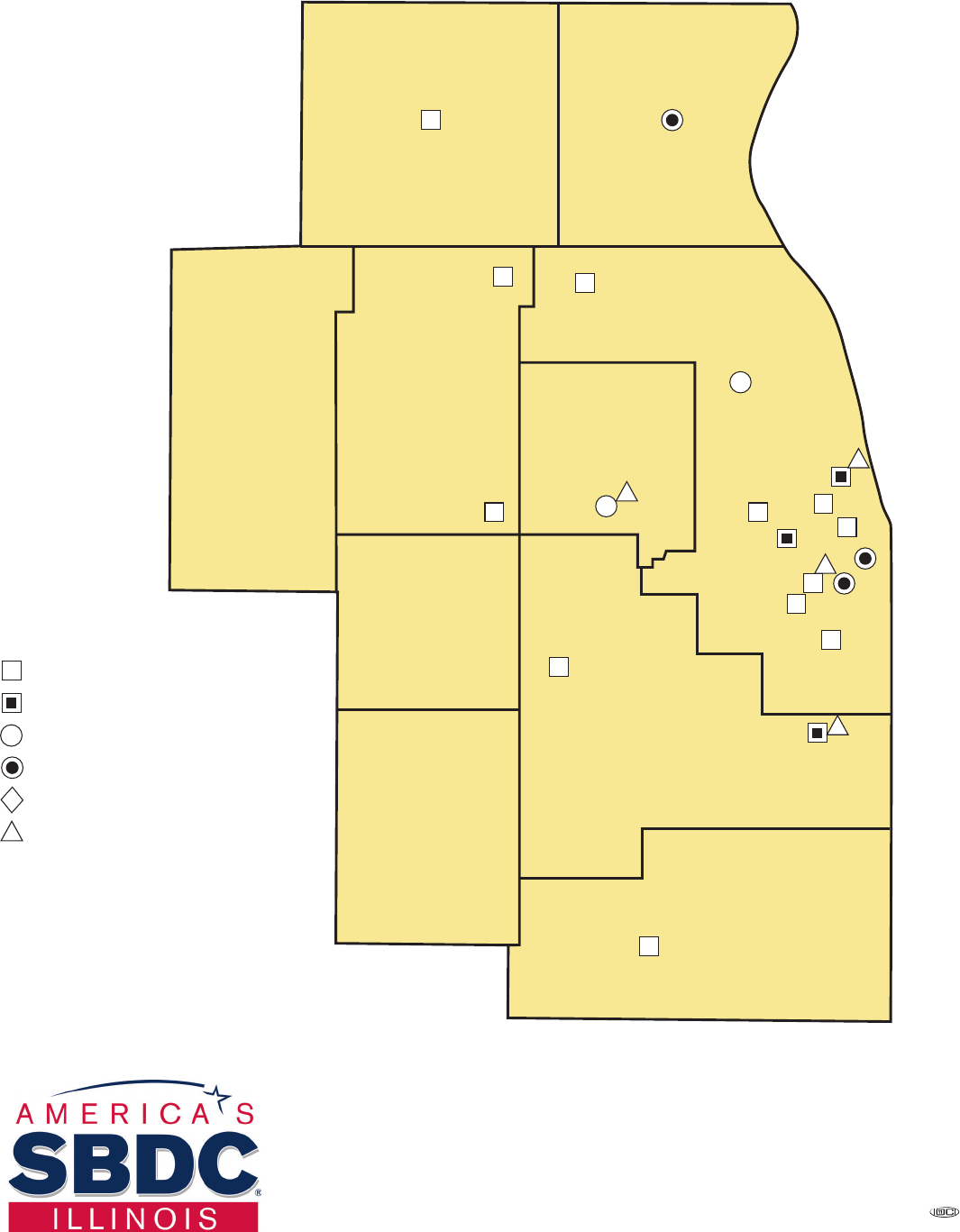
Printed by the Authority of the State of Illinois. W.O. 12-021 100 9/11 IOCI 12-261
www.ilsbdc.biz
The Illinois SBDC is funded in part through a
cooperative agreement with the U.S. Small Business
Administration and the Illinois Department of
Commerce and Economic Opportunity.
Mc Henry
Lake
De Kalb
Kane
Cook
Du Page
Kendall
Grundy
Will
Kankakee
Northeast Region
"Chicagoland"
Business Center Locations
SBDC
SBDC/ITC
SBDC/ITC/PTAC
SBDC/PTAC
PTAC
Technology Services
